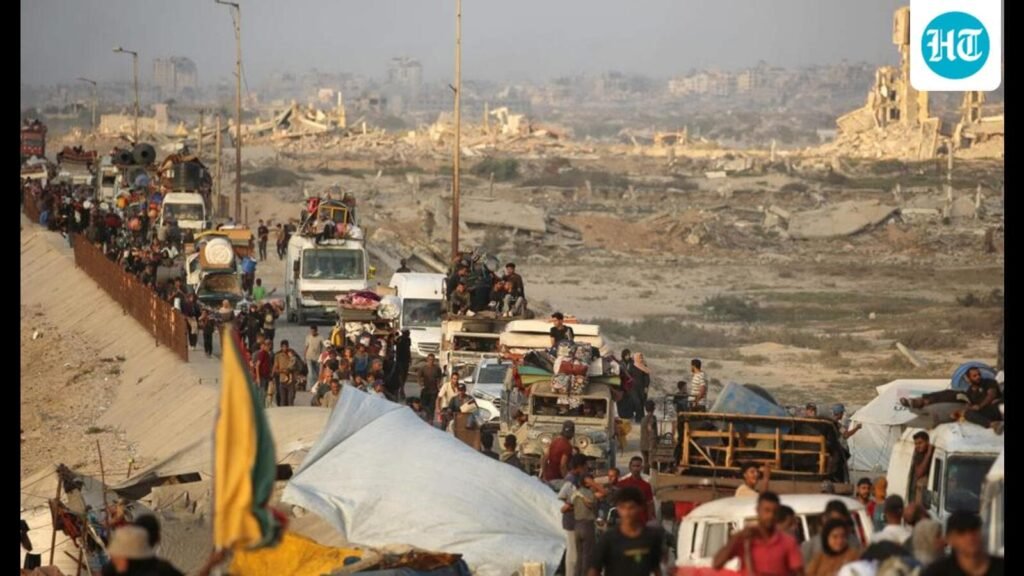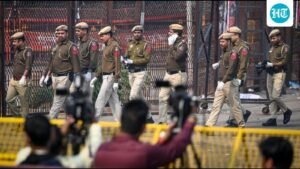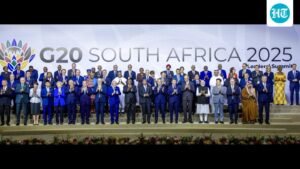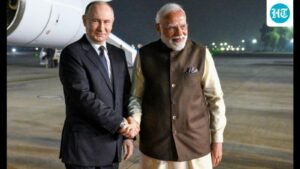
Us President Donald Trump’s Gaza Peace Plan has dramatically shifted from a diplomatic proposal to a fragile, high-stakes reality. Following Hamas’s Conditional Acceptance on October 3 to release all hostages and cede governance, trump ordered an immedialy halt to israel’s bombing campaign. However, with the bombings continuing and causing dozens of casualties, the nearly two-yar war, which have claimed over 67,000 Palestinian and Nearly 1,200 Israeli LIVES, HAS ENTERED A TENSE and DECISIVE NEGOTITITION Phase.

On the second anniversary of the October 7 attack, all eyes are on Sharma el-shheikh, egypt, where Crucial Indirect Talks are Underway. Trump has sent his son-in-law, jared kushner, and envoy steve witkoff to lead the us effort, with delegations LED by Israel’s Ron Dermer and Hamas’s’s Khalil Ale-Hayyaya-Who Made His Firing Public Appearance Since Surviving An Israeli Assassination Attempt in Qatar – Discussing the plan’s ambigues, contential details, facilitated by egyptian and Qatari Mediars. NUDGED by Trump to “Move Fast”, The Discussions Have Focused on the Initial Phase of the PACE Plan, Emphaising Technical IssUES Such as Structuring Prisoneer and Hostage EXCHANGEs, and Arranging Security Guarantees. As of now, the talks have not yielded an agreement on a large-scale hostage or prisoner exchange, and no timeline for a ceasefire has been annouted, fueling speech
The core of the 20-point plan, Built on the three Pillars of Security, Governance and Restructuring, Remains A Rapid, Sequenced Framework Calling for A Hostage-Prisoner Exchange, the Complete Child of Hamas And a Technocratic Committee Overseen by a Trump-Chaired “Board of Peace” Until a Reformed Palestinian Authority (PA) Can Assume Control. Hamas’s acceptance, while a significant step, is far from absolute. The Group Insists on Negotiating Key Aspects, Seeking International Guarantees for a Full Israeli Withdrawal and Amendments to Its Disarmamements Terms, WITH REPORTS SUGTS SUGGENTS SUGGENTS SPLITS BETWEN ITS Political And Military Wings. Adding to the complexity, egypt is set to host a broader conference of Palestinian Factions to Discuss Gaza’s Future, Where Hamas Has Has Has Has Has Has Has Has Has Has Has Has Has Extured A Desire To Participate in Shaping Governance of Shaping Governance Plan’s Fundamental Principle of Excluding It Entrely.
Trump’s positive reading of Hamas’s Response has sparked controversy within israeli circles, with Senior Officials Calling The Conditional Accepting As “Essentially a Rejection”. Yet Trump’s Optimistic Claim that Hamas was “ready for a lasting peace” Caught Prime Minister Benjamin Netanyahu Off Guard, FORCING israel into a more reactive posture.
The proposal has placed the israeli government in a precarious position. While Netanyahu’s Office Announced Preparations to Implement the Plan’s first phase, his rhetoric harden, warning that hamas’s disarmament would have “Eiters the easy way or the Hard Way,” Israel’s Military will maintain control over the gaza territories. Coupled with his Repeated Rejection of a Palestinian State, This Stance Challenges the plan’s text and seems designed to appease to his far-Right Coalition Partners, Who Condemn the deal as a Diplomatic Fail. These deep internal fractures make it politically perilous for the government to implement the plan’s core tans, even as thirds of protesters in tel aviv ul aviv urage seconds “Now or Never”.
Despite these Hurdles, The conditional Agreement could unlock transformative short-term benefits if the sharm el-shheikh talks successed. An End to Hostilations Would Provide Immediate Relief to a Population Suffering Catastrophic Losses, What The Return of Hostages and Prisoners would resolve deeply traumatic if The reopening of the rafah crossing enables a massive influx of aid to rebuild infrastructure. A Us-LED International Stabilisation Force (isf) is Slated to Provide Internal Security, Assist in Demilitarization, and Coordinate with Local and Regional Authorities, ENABILING Recontructure. While eight arab and Muslim nations issued a joint statement welcoming trump’s vision, they critically avoided specific military commitments to the isf, reflecting secrities about percent percitived Interfererance in Palestinian Territory.
The plan’s true significance may lie in its long-term geopolitical consorticals. It is a strategic extension of the Abraham Accords, Designed to Manage The Palestinian Conflict and remove it as the main obstacle to a full-scale regional alliance between israel and the Gulf States. If successful, it could pay the way for normalization between israel and saudi arabia. Convercely, a collapse would reinforce the narrative that normalization come at the expense of Palestinian rights.
For Palestinians, The Vaguely Defined “Pathway to StateHood” is unlikely to lead to a sovereign nation. This promise is conditional on pa reforms and laces an enforceable timeline, which critics view as a formula for indefinite postponement. Furthermore, the pledge of an israeli withdrawal is limited, allowing for an indefinite “Security Perimeter Presence” while Omitting the Core Isue of Settlements. The more probable outcome is a prolonged transitional phase in which gaza is governed by an international body, effectively deferring the final status question.
Trump’s gaza peace plan has shifted from a risky gamble to a delicate, ongoing negotiation. The Sharma El-Sheikh Talks Serve as a Test Where its Bold Vision will eite to a workable ceasefire or collapse under its contradictions. While there is real potential to stop the violence, lasting success depends on bridging deep ideological divisions between hamas’s political ambitions and israel’s insistence on comepole Control. The plan’s Ultimate legacy hinges not on its text, but on whather its architects can manage these iRraconcilable demands.
For India, Whose West Asian Interests Focus on DiasPora Security, Energy Flows, and Connectivity Projects, The Plan Presents A Strategic Dilemma. Its success would reduce reliefs for the region and create the stable environment needed to activate the India-middle east-Europe Economic Corridor (IMEC). However, Trump’s Maximum Pressure Policy on Iran, Including The Recent Revocation of Sanctions Waivers for the Chabahar Port, Jeopardies India’s Significant Investments in this Allternative Gateway to Center. The plan effectively places India’s two flagship connectivity projects on opposite sides of a deepening geopolitical divide, forcing a Dificult Strategic Choice.
Ausaf Sayed is a Former Ambassador of India to Saudi Arabia, Yemen, and High Commissioner to Seychelles. The views expressed are personal







